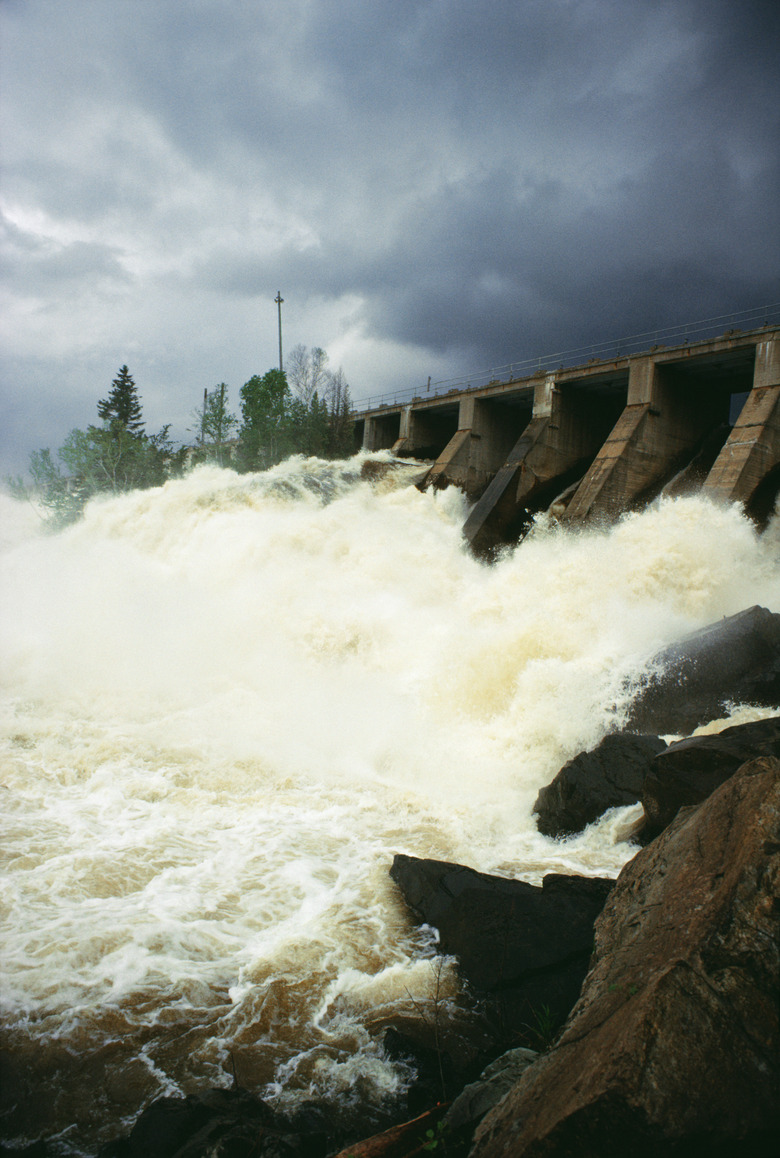Science Experiments And Art Projects On Natural Disasters For Kids
No part of earth is immune to natural disasters. Children are naturally curious about their surroundings and such disasters fill them with anxiety, questions and confusion. Science experiments and art projects can teach students about nature and its potential catastrophes. Understanding these natural events also children them cope better with similar natural emergencies they many encounter.
Shape of Tornado
Shape of Tornado
Fill an empty soda bottle with colored water and dry its mouth. Cut a cardboard into a small circular shape and stick it firmly onto the mouth and make a hole in the cardboard. Place a second empty bottle upside down over the first bottle. Ensure that the mouths of the bottles are aligned together so that liquid from one bottle can flow easily to the other through the hole in the cardboard. Tape the two bottles tightly together. Swirl the bottles several times and then turn quickly so that the bottle with water is on top of the empty bottle. The water inside the bottle on top swirls and forms a funnel in the shape of a tornado as it pours into the bottle below. Students compare the vortex of water with the vortex of air formed during a tornado and understand how the air in a tornado swirls and forms a funnel shape.
Volcanic Activity
Volcanic Activity
Create a mock volcano to show the force with which a volcano erupts. Cut a cardboard to fit inside a cookie tray to act as the base of the volcano. Slice off the neck of a soda bottle at an angle and fix it on the tray. Fill it with vinegar, dish soap and red dye, which would form the lava. Shape modeling clay around the soda bottle to look like a volcano, with a wide base and narrow top. Once dry, paint the volcano suitably. After the paint has dried, carefully drop some baking soda wrapped in tissue paper inside the soda bottle and watch the volcano to erupt.
Tsunami
Tsunami
Explain to students how tsunamis occur due to undersea earthquakes or landslides, volcanic eruptions or the impact of a large meteorite in the sea. Using a world map and colored pins, identify global tsunami areas. Label the event — earthquake and it's size, for example — causing the tsunami and the date when it happened. Use blue pins to depict areas already affected and red pins for susceptible areas. Label the reasons these areas are susceptible such as the nearby location of an underwater volcano or earthquake fault line.
Measuring Earthquakes
Measuring Earthquakes
Explain how earthquakes occur and how they are measured, creating a simple seismometer. Cut two holes next to each other on a cardboard. In a plastic cup, make one hole at the bottom and two holes at exactly the opposite ends, on the rim. Put a marker through the bottom hole and stick it with clay. String the two holes on the rim and thread the string through the holes in the cardboard so that the cup is firmly attached to it. Put some weight into the cup to make it heavy. Ask a student to shake the cardboard while another student gradually pulls a paper across the cup, with the tip of the marker touching the paper. The scraggy line on the paper imitates a seismic reading.
Cite This Article
MLA
Stewart, David. "Science Experiments And Art Projects On Natural Disasters For Kids" sciencing.com, https://www.sciencing.com/science-experiments-art-projects-natural-disasters-kids-12006531/. 24 April 2017.
APA
Stewart, David. (2017, April 24). Science Experiments And Art Projects On Natural Disasters For Kids. sciencing.com. Retrieved from https://www.sciencing.com/science-experiments-art-projects-natural-disasters-kids-12006531/
Chicago
Stewart, David. Science Experiments And Art Projects On Natural Disasters For Kids last modified August 30, 2022. https://www.sciencing.com/science-experiments-art-projects-natural-disasters-kids-12006531/
